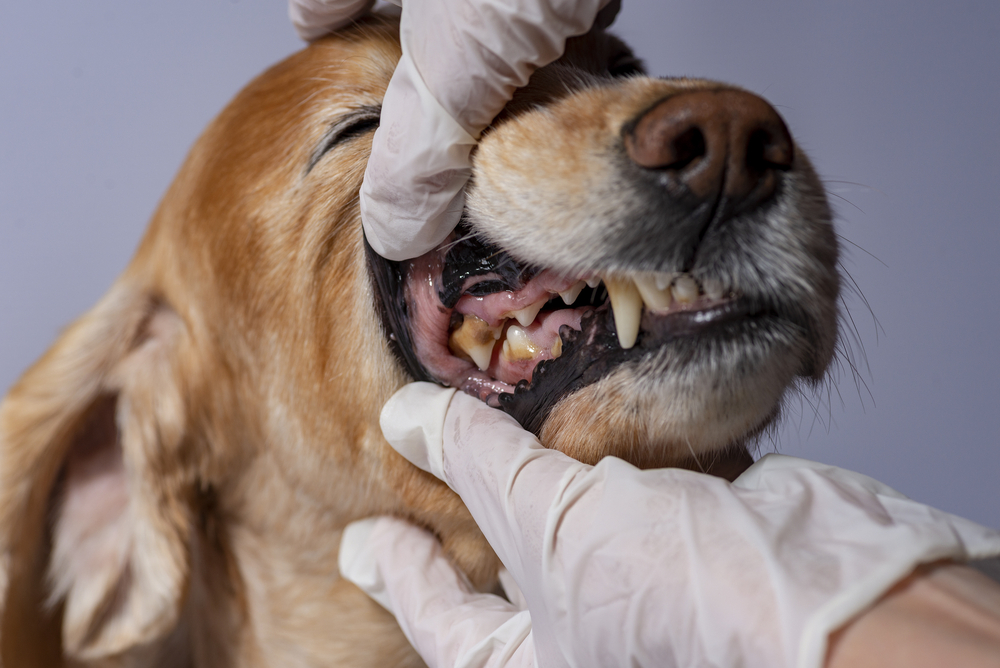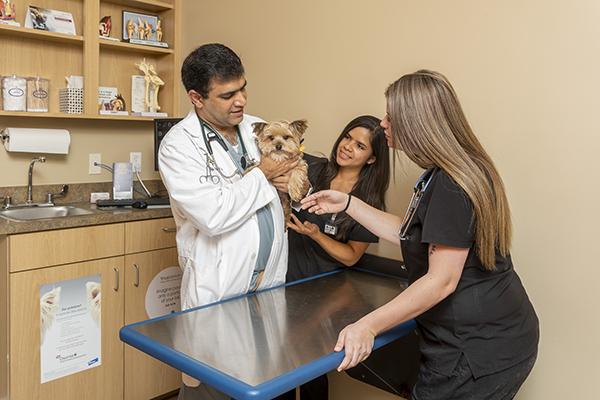
Dental care for dogs is too often overlooked, but it’s vitally important for their overall health and well-being. The teeth and gums can affect eating habits, and even sometimes lead to behavioral problems in animals if oral health is ignored.
What Is Gum Disease in Dogs?
If oral health is ignored for too long of a period, gum disease, or periodontal disease, can develop. This progressive disease can cause lasting damage to a dog’s teeth, gums, mouth, and jaw which can alter the supporting structure of a dog’s oral cavities and lead to uncomfortable symptoms. If you are concerned your dog may have gum disease, pay attention to these common signs and symptoms.
Sign #1
Bad Breath
Typically, the first sign of disease progression in dogs is bad breath. However, pay attention to whether the bad breath is only due to a potent-smelling food they recently ate or if the breath chronically smells bad. If your dog consistently has bad breath, this could be a sign of excess bacterial overgrowth in the mouth due to gum disease.
How can I help get rid of my dog’s bad breath?
The best way to prevent bad breath associated with early stages of gum disease is to incorporate an oral healthcare routine such as brushing their teeth at home.
Sign #2
Bleeding Gums
Similar to humans with gum disease, bleeding gums can also be a common sign of poor oral health. Bleeding gums are typically a sign of gingivitis, which can progress into gum disease if left untreated.
How can I minimize bleeding gums in dogs?
Try taking your dog to the vet for a professional cleaning or implementing a regular dental routine at home.
Sign #3
Red and Inflamed Gums
While all gums have a pink tint, if they become too dark red this is a common sign of gum disease and inflammation. This color change could be due to a vitamin deficiency, hormonal changes, or a weakened immune system, but it is most frequently a key sign that gingivitis has progressed too far into gum disease in dogs.
How can I get my dog’s gums to stop being red and inflamed?
To reduce inflammation, a dog will need specialized dental care such as oral gels or antibacterials to clean the mouth and get rid of the ongoing swelling.
Sign #4
Receding Gums
Receding gums are typically a sign of a bone infection or gum disease left untreated. When this occurs, the roots of the teeth may become exposed as the gums continue to recede. Gum recession should not be taken lightly, as it becomes more difficult to treat the longer it continues. Always contact a vet for specific advice and next steps.
How can I help my dog’s receding gums?
Take your pet to a vet for treatment options such as bone grafting therapy, antibiotic treatment, or root planing. A vet may also recommend at-home nutrition and dental health strategies such as probiotics to encourage the growth of healthy oral flora.
Sign #5
Loose or Missing Teeth
One of the later signs of gum disease is loose or missing teeth. At this stage, the disease has progressed beyond the point of recovery through at-home care. Missing teeth or loose teeth mean that the gums are no longer strong enough for everyday usage such as eating. Chronic, untreated bacterial overgrowth can lead to teeth and gum degradation in dogs.
How can recover my dog’s missing or loose teeth?
At this late stage of gum disease, you will need to take your dog to a vet for teeth extraction.
When To See a Vet
It’s always in a dog owner’s best interest to see a vet regularly. Regular check-ups mean that your vet can catch any signs of disease early on, making it easier to treat and recover from excess gum inflammation. Additionally, you should always make an appointment if you notice any of the signs or symptoms of gum disease in your dog for further evaluation. A vet can discuss with you the best course of action and whether treatment is manageable with at-home care or if your dog needs specialized in-office treatment.
Looking for the right veterinarian?
Contact us to schedule an appointment.
Contact us


